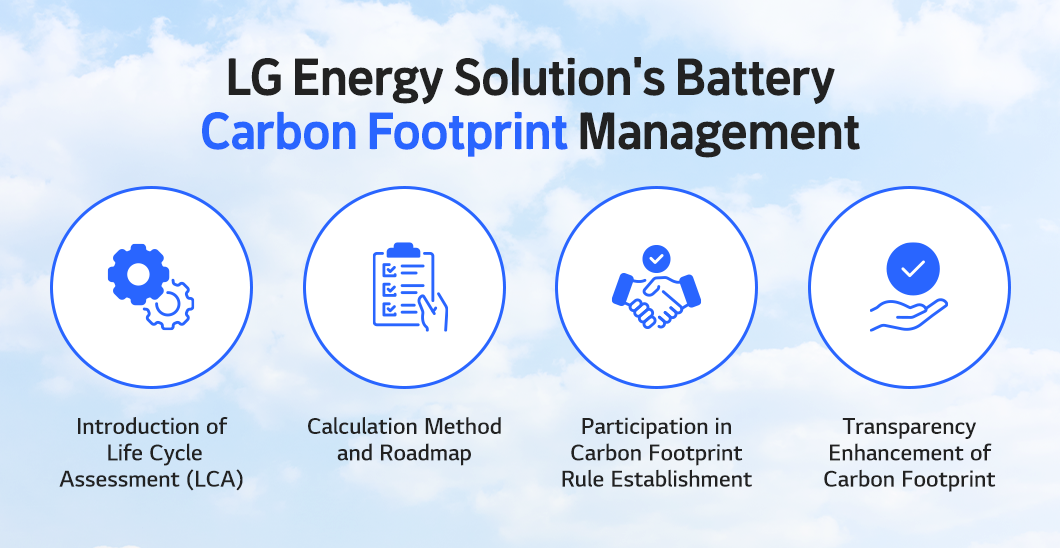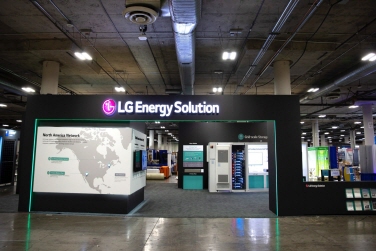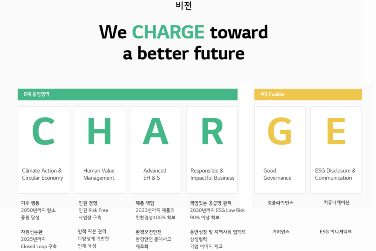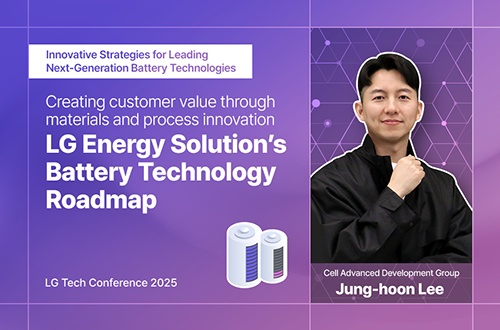In the quest for coexistence with the Earth and sustainable development, eco-friendly management capabilities have become essential for businesses.
Amid this circumstance, LG Energy Solution is leading the way in eco-friendly business practices aimed at protecting our planet. Its ultimate goal is not only to achieve carbon neutrality across the entire value chain by 2050 but also to realize “carbon negative*” status. It is particularly active in measuring the “carbon footprint” of its battery products and transparently disclosing related information.
*Carbon Negative: This term signifies the continued efforts to actively address climate change with local communities and stakeholders, even after achieving carbon neutrality, by removing more carbon than is emitted during operations.
Why is it necessary to disclose the battery’s carbon footprint?

The carbon footprint represents the total amount of greenhouse gases, directly or indirectly emitted during a product’s production and consumption phases, converted into carbon dioxide. In other words, it quantifies the carbon emissions from the point of manufacturing the product through to the point of its purchase and usage by consumers. This approach was initiated to reduce carbon dioxide, a significant cause of environmental pollution.
The EU is moving towards mandating the assessment and disclosure of the carbon footprint of battery products based on Life Cycle Assessment (LCA). Moreover, the EU plans to assign grades to battery products based on the carbon footprint results and prohibit the sale of those that cause environmental pollution.
*Life Cycle Assessment (LCA): A methodology that assesses environmental impacts associated with all the stages of a product’s life cycle from raw material acquisition, processing, assembly, transport, use, and disposal. It includes the use and emissions of energy and mineral resources into the air, water, and soil.
As a result, there is a growing demand for companies to provide information about their carbon footprint. LG Energy Solution aims to go beyond accurately measuring and communicating its carbon footprint to stakeholders; it intends to progressively reduce it, contributing to a sustainable future.
Protect the Earth! How LG Energy Solution Manages its Carbon Footprint
LG Energy Solution has recognized the importance of environmental protection early on and leads in developing battery carbon emission indicators and responding to related regulations. What efforts is LG Energy Solution making to reduce carbon dioxide emissions and provide transparent environmental information?

First, LG Energy Solution introduced the LCA in 2019.
This assesses the potential impacts of its battery products. Based on the results, LG Energy Solution △calculates the carbon footprint, △identifies hot spots in the raw materials/value chain, and △establishes a mid-to long-term carbon neutral strategies.
Second, it has established its own battery carbon footprint calculation standards and roadmap.
In conducting the LCA, LG Energy Solution referred to domestic and international guidelines for carbon footprint calculation. This led to the establishment of its own guidelines that reflect the characteristics of its battery products. It has particularly developed a detailed carbon footprint roadmap for individual products, ensuring more thorough management.
Third, it is also participating in establishing domestic and international carbon footprint standards.
LG Energy Solution is participating in global initiatives such as the European Battery Industry Association, RECHARGE, and the Global Battery Alliance (GBA). Not only is it monitoring the process of establishing battery carbon footprint calculation standards, but it is also actively contributing its opinions. Domestically, it is collaborating with the Korea Environmental Industry & Technology Institute to develop methods for the entire life cycle environmental assessment of batteries.
Fourth, it is enhancing the reliability and transparency of its carbon footprint calculation process and indicators.
LG Energy Solution has introduced the Environmental Product Declaration (EPD). The EPD quantifies the impact on the environment, such as air pollution, water pollution, and global warming, caused throughout the product’s life cycle, which is then verified and labeled on the product by the Korea Environmental Industry & Technology Institute (KEITI). Like so, LG Energy Solution has its own carbon footprint calculation process and results verified by a third-party certification body. In 2022, four products related to Energy Storage Systems (ESS) completed certification, and this year, it plans to increase the number of products undergoing EPD.
We have examined the importance of the carbon footprint and LG Energy Solution’s management methods. In the next session, we will look closer at LG Energy Solution’s roadmap for reducing its carbon footprint.





